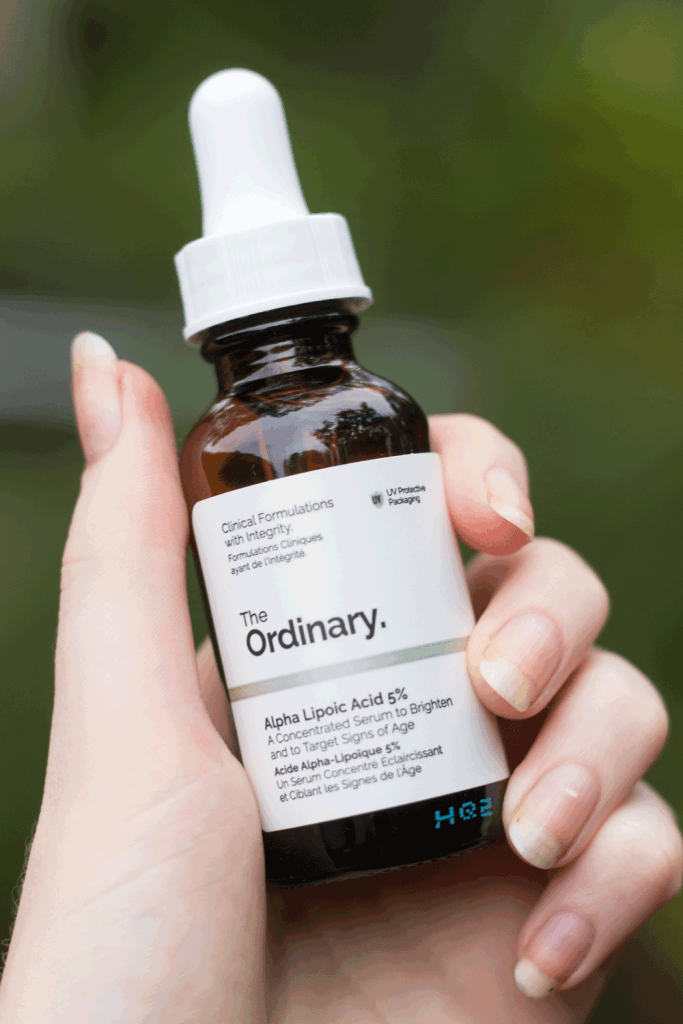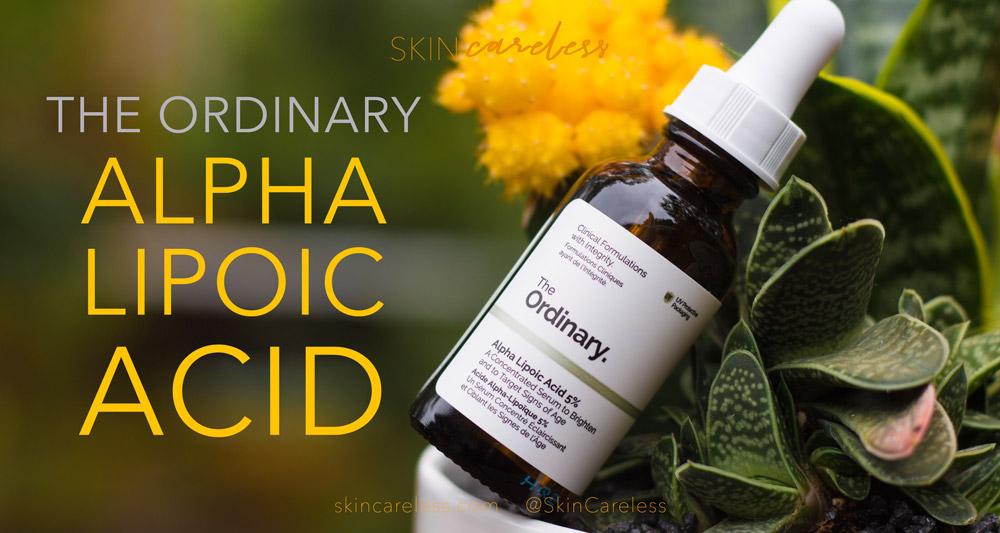Alpha Lipoic Acid: Before & After Skin Transformations You Need To See!
Are you searching for the elusive fountain of youth, hoping to turn back the hands of time and reclaim your youthful glow? Alpha-lipoic acid (ALA) might just be the secret ingredient your skincare routine has been missing. It is a powerful antioxidant, and its effects on the skin can be remarkable.
The skincare industry has been buzzing with excitement over alpha lipoic acid in recent years, and for good reason. This versatile compound, a universal antioxidant, offers a comprehensive approach to skin health, working both inside and outside the body to combat the damaging effects of free radicals. Understanding the science behind ALA and its transformative potential is key to unlocking its full benefits.
| Aspect | Details |
|---|---|
| Scientific Name | Alpha Lipoic Acid (ALA) |
| Chemical Formula | C8H14O2S2 |
| Molecular Weight | 206.33 g/mol |
| Also Known As | Thioctic acid, Lipoid acid |
| Discovery Date | 1950s |
| Key Properties | Antioxidant, Anti-inflammatory, Metabolic function support |
| Solubility | Water and fat soluble |
| Primary Function in Body | Energy metabolism and free radical scavenging |
| Found Naturally In | Every cell of the body, also in foods like red meat and organ meats |
| Mechanism of Action | Neutralizes free radicals, regenerates other antioxidants, enhances cellular function |
| Use in Skincare | Reduces oxidative stress, improves skin texture, brightens skin tone, combats aging |
| Side Effects | Mild irritation, redness, dryness (rare: allergic reactions) |
| Dosage forms | Supplements, topical serums, creams |
| Reference | National Center for Biotechnology Information (NCBI) |
Alpha lipoic acid (ALA), a naturally occurring compound present in every cell of the human body, is the cornerstone of this transformation. It stands apart from other antioxidants due to its unique solubility characteristics. Functioning as both a water-soluble and fat-soluble compound, it's able to work effectively throughout the entire cell, offering comprehensive protection against oxidative stress.
- Katmovie Is It Safe Legal Your Guide To Streaming Movies
- Blake Livelys Beauty Spot The Iconic Mark Its Secrets
The body itself produces ALA in small amounts, but incorporating external sources through supplements or, more commonly, topical skincare products, can amplify its benefits. It's this ability to scavenge free radicals, improve skin texture, and boost the efficacy of other active ingredients that has propelled it to the forefront of skincare formulations.
The story of ALA began in the 1950s, with its initial recognition as a key player in energy metabolism. As research advanced, the spotlight shifted to its powerful antioxidant capabilities, which paved the way for its widespread use in both medical treatments and cosmetic applications. Today, it is a widely valued ingredient in many of the most effective skincare products available.
The benefits of alpha lipoic acid for the skin are extensive, making it an indispensable addition to any skincare regimen. Heres a breakdown of its most notable advantages:
- Antioxidant Protection: ALA effectively neutralizes free radicals, thus minimizing oxidative stress and preventing premature aging.
- Brightening Effect: It is known to reduce the appearance of hyperpigmentation and dark spots, leading to a more even and luminous skin tone.
- Improved Skin Texture: ALA enhances skin smoothness and elasticity, helping to combat fine lines and wrinkles.
- Enhanced Hydration: It boosts the skin's capacity to retain moisture, keeping it soft, supple, and well-hydrated.
One of the most celebrated benefits of alpha lipoic acid is its pronounced anti-aging properties. Its ability to neutralize free radicals while encouraging the production of collagen helps maintain skin firmness and elasticity. This, in turn, reduces the appearance of fine lines and wrinkles, giving the skin a more youthful look.
The true power of alpha lipoic acid is best demonstrated through "before and after" transformations. Many users report visible improvements in skin texture, brightness, and the overall health of their complexion.
Consider the findings of a study published in the Journal of Cosmetic Dermatology. Participants who incorporated alpha lipoic acid serums into their skincare routines experienced a significant reduction in hyperpigmentation and an improvement in skin clarity after just eight weeks. The results speak for themselves, showcasing ALA's ability to deliver tangible results.
The journey to radiant skin with alpha lipoic acid is not just a theory; its a reality, as seen in these real-life transformations:
- User A: Noted a significant reduction in dark spots and a noticeable improvement in skin radiance within six weeks of consistent use.
- User B: Reported a smoother skin texture and a reduction in the appearance of fine lines after three months of regular application.
Adding alpha lipoic acid to your skincare routine is remarkably simple and can be easily integrated. These steps can help you maximize its effectiveness:
- Start with a clean face, then apply a small amount of an alpha lipoic acid serum.
- Follow up with a moisturizer to seal in hydration.
- Always use sunscreen during the day to protect your skin from UV damage.
For those new to alpha lipoic acid, it is advisable to start with a low concentration and gradually increase it. Patch testing is also a key step to ensure no adverse reactions occur. This approach enables your skin to adjust and benefit from ALA without any unnecessary irritation.
Choosing the right alpha lipoic acid product is essential for optimal results. Here are some of the best options currently available:
- Skinceuticals C E Ferulic: A well-regarded product that combines ALA with vitamin C and ferulic acid for enhanced antioxidant protection.
- The Ordinary Alpha Lipoic Acid 5%: A budget-friendly option known for delivering effective results.
- Paula's Choice Resist Anti-Aging Clear Skin Hydrator: Formulated with ALA and a blend of other anti-aging ingredients.
When selecting an alpha lipoic acid product, take into account factors such as the concentration of ALA, the presence of additional ingredients, and the price. Reading reviews and consulting with a dermatologist can guide your decision-making process, helping you find the perfect product for your specific skin concerns.
While alpha lipoic acid is generally safe for most users, some might experience mild side effects. Common reactions include minor irritation, redness, or dryness. In rare cases, allergic reactions may occur.
Before fully integrating ALA into your skincare, a patch test is always recommended. Discontinue use if any adverse effects persist. The key is to listen to your skin and adjust your approach accordingly.
To minimize the risk of side effects, start with a low concentration and progressively increase as your skin tolerates it. Applying a gentle moisturizer can also help soothe any irritation that may arise.
The effectiveness of alpha lipoic acid is backed by a wealth of scientific research. Studies have proven that ALA not only neutralizes free radicals but also boosts the activity of other crucial antioxidants, like vitamin C and E. This synergistic effect makes it a powerful tool in combating oxidative stress, leading to improved skin health.
Research published in the Journal of Clinical and Aesthetic Dermatology emphasizes the effectiveness of alpha lipoic acid in enhancing skin texture and reducing hyperpigmentation. These findings underscore its role as a key ingredient in contemporary skincare formulations.
Alpha lipoic acid, while offering many benefits, warrants a comparison with other skincare ingredients. Let's assess:
- Vitamin C: Both are powerful antioxidants, but ALA works both inside and outside the cell, providing broader protection.
- Retinol: Retinol is more aggressive in promoting cell turnover, while ALA focuses on antioxidant protection and skin brightening.
The art of skincare often involves synergy. Incorporating alpha lipoic acid with other active ingredients can amplify its positive effects. For example, combining it with vitamin C can provide a robust boost of antioxidant protection, while pairing it with hyaluronic acid can significantly enhance hydration.
Here are some of the most common queries regarding alpha lipoic acid:
- Can alpha lipoic acid be used during pregnancy? Its always wise to consult a healthcare professional before using ALA during pregnancy.
- Is alpha lipoic acid suitable for all skin types? Yes, it is generally suitable, but those with sensitive skin might benefit from starting with a lower concentration.
For more detailed answers, always refer to the product packaging or consult with a dermatologist for personalized advice and guidance.
Alpha lipoic acid skin before and after transformations are a testament to its effectiveness in revitalizing the complexion. By incorporating this potent antioxidant into your skincare routine, you can actively combat the signs of aging, improve skin texture, and achieve a brighter, more youthful glow.
- Priscilla Love Vanwinkle Age Biography More
- Gloria James The Unsung Hero Behind Lebrons Success Discover Now

Pin on Skin Care Alpha Lipoic Acid

The Benefits of AlphaLipoic Acid + Review Skin Careless

The Benefits of AlphaLipoic Acid + Review Skin Careless